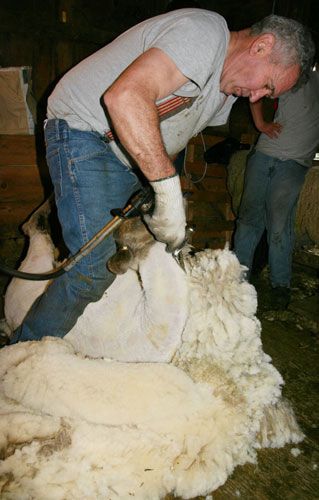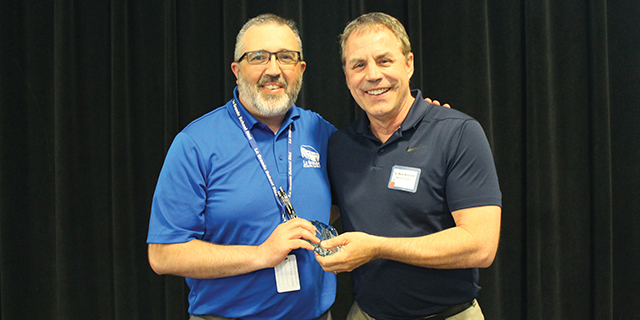Shear art, sheer work
Published 11:16 am Saturday, May 17, 2008

- Greg Cortaberria makes it look easy as he deftly manipulates the heavy sheep into the proper positions for shearing. He said he can often work a ewe in three minutes. Photo/CHRIS BAXTER
The art of sheep-shearing is one of those ancient relationships between humankind and its domestic animals.
It’s a precise process demanding much prowess to avoid injury to the sheep or the shearer.
A crew of Cove 4-H and FFA kids got a firsthand look at this aspect of
sheep husbandry on a recent Saturday, out at the Hunter Road ranch run
by Susan Bunch and Jennifer Isley.
On hand with the electric shearer was Greg Cortaberria, who was sweeping through the Grande Ronde Valley from his home in Hermiston to work flocks at a number of spreads.
Isley, who is also the executive director of the USDA’s Farm Service Agency in Union County, said that when it comes to shearing dozens of ewes, the more helping hands, the better.
“It’s good for the kids, because they get some work experience … and for us, it’s pretty labor-intensive for just a couple of people,” Isley explained.
Shearing sheep is partly contingent on the weather. In the Grande Ronde country, Isley said many ranchers shave wool in early February – often just after the most crippling of winter’s frosts, but before the spring rains.
“So we’re trying to find that window between really cold and really wet,” she observed.
The heavens cooperated for Cortaberria’s visit to Isley’s farm. But they opened up that evening, so the shearing concluded just in time.
Isley said, “It’s so affected by the weather. You can’t put wet wool in the bags.”
Some shear before lambing, but this requires adequate protection for the ewes from the elements. The Isleys, by contrast, “tag” their ewes before they give birth, shearing just around the udder and backside to insure both a cleaner delivery and cleaner suckling for the newborns.
Then, after lambing, the ewes get a more thorough cut.
Cortaberria is no slouch: With the help of the kids and the Isleys, he sheared 103 sheep at Bunch/Isley Ranch on Saturday. He had more engagements later that day and the next.
Cortaberria said he’s been shearing “off and on for 36 years.”
Much of that time he was shearing on the side, working mainly as a logger throughout Eastern Oregon.
Now retired from the woods, he travels widely in the spring, lending a hand on the sheep-ranches from Joseph to John Day to Yakima.
“I’ve got to go quite a ways, wherever (the flocks) are,” he laughed.
He said he can often work a ewe in three minutes, although it all depends on the disposition and condition of the animal.
“It’s real hard work,” he acknowledged – so hard that he finds fewer younger people committing to learning the procedure.
Shearing demands such skill and time that new technology is continually developed to tackle the operation, from shearing robots to a protein injection that prompts sheep to drop their fleeces automatically.
It also means that manual shearing has become a sport. The world record for strongwool ewes belongs to a New Zealander: Rodney Sutton, who, in 2007, sheared 721 in nine hours, breaking his fellow countryman Darin Forde’s record from ten years previous.





